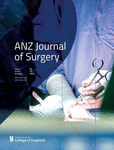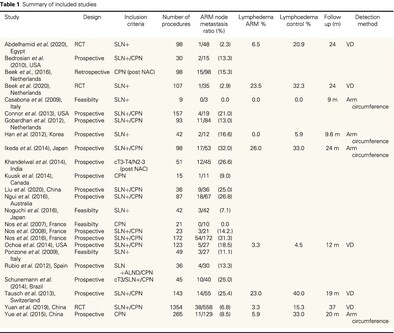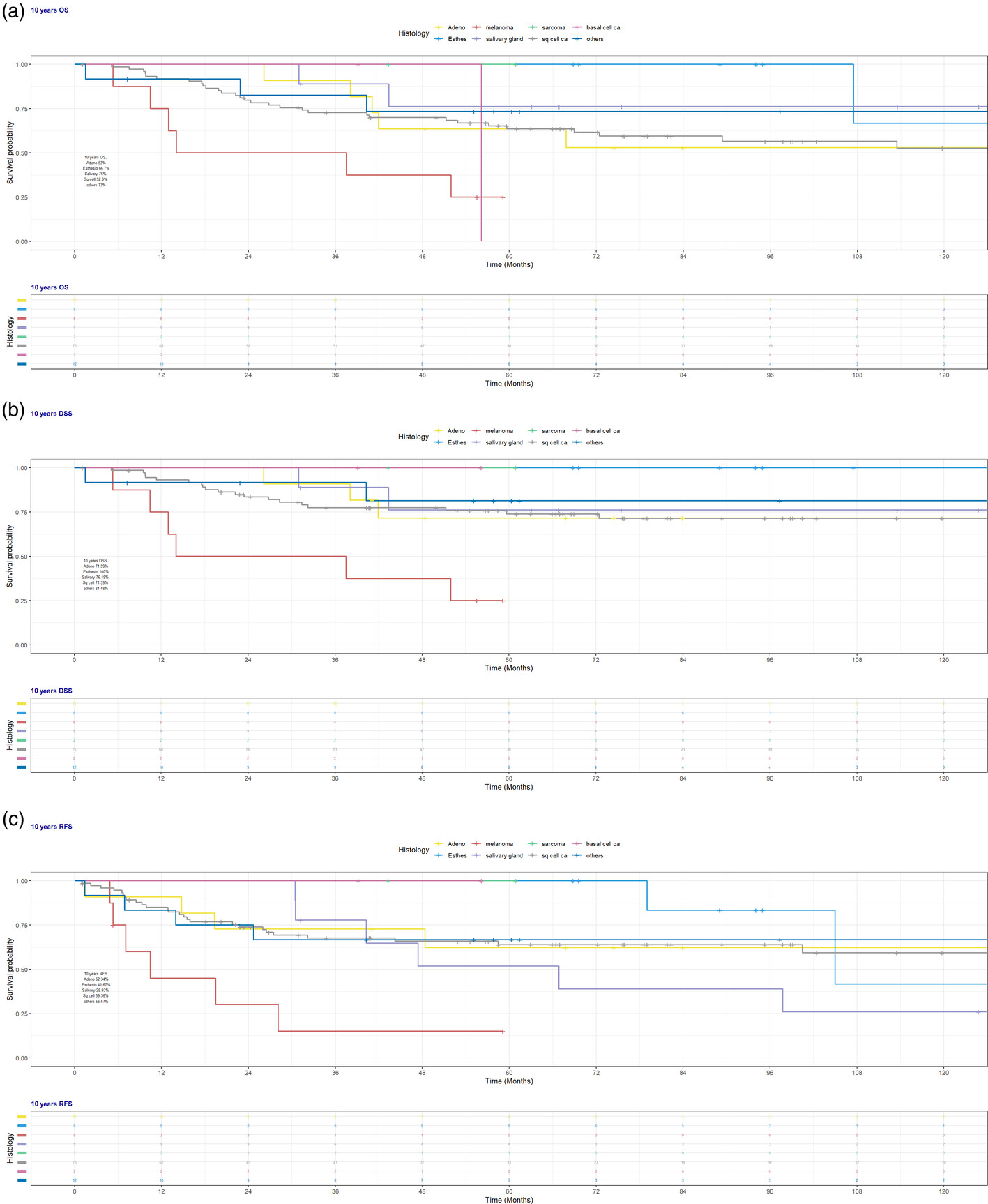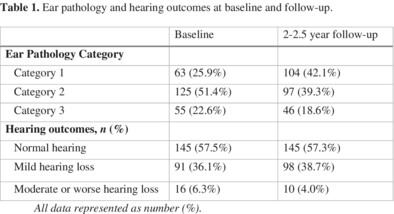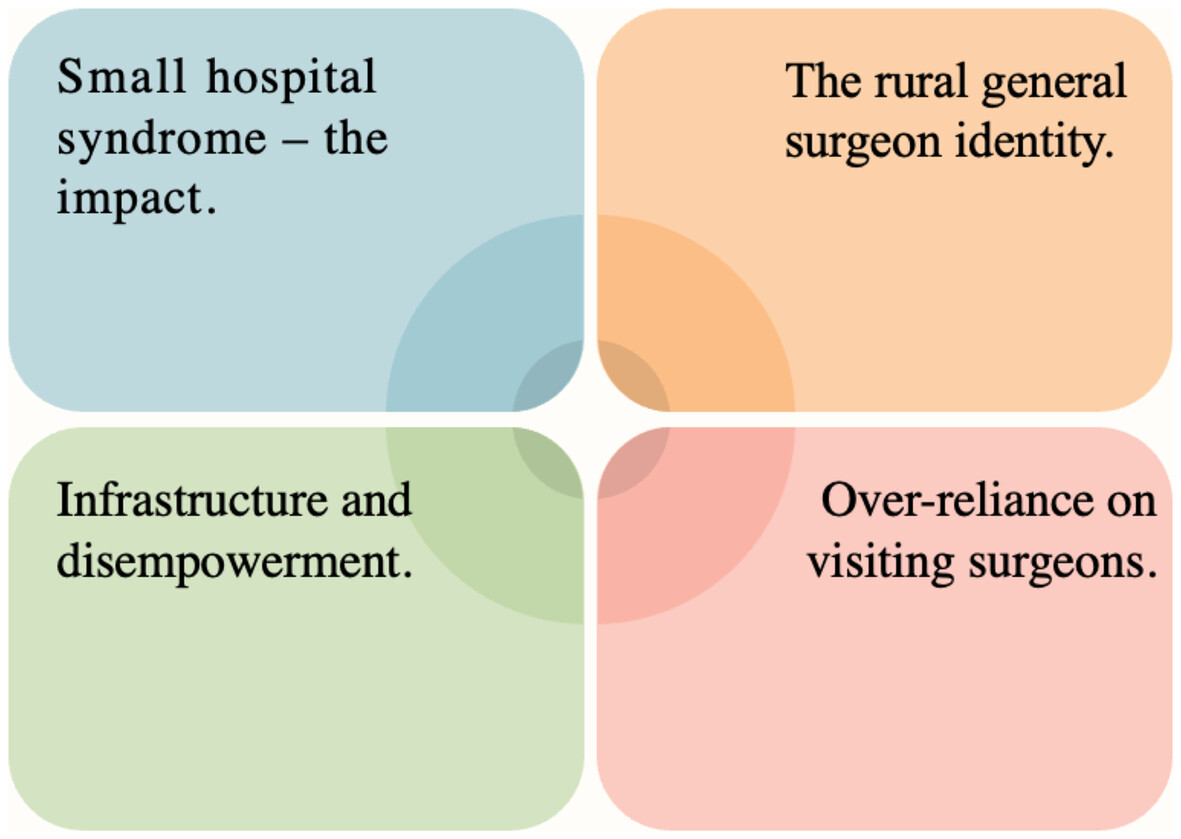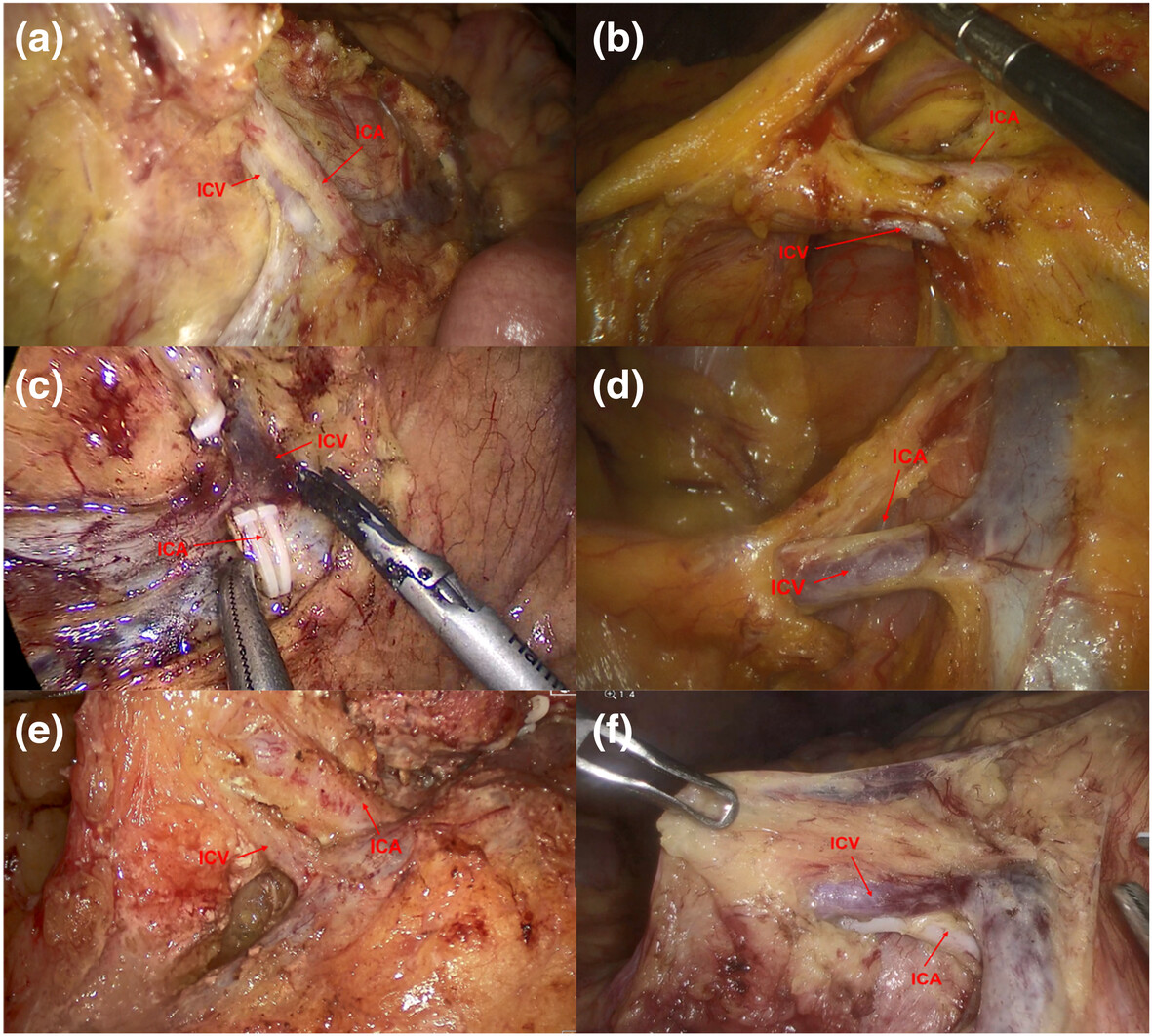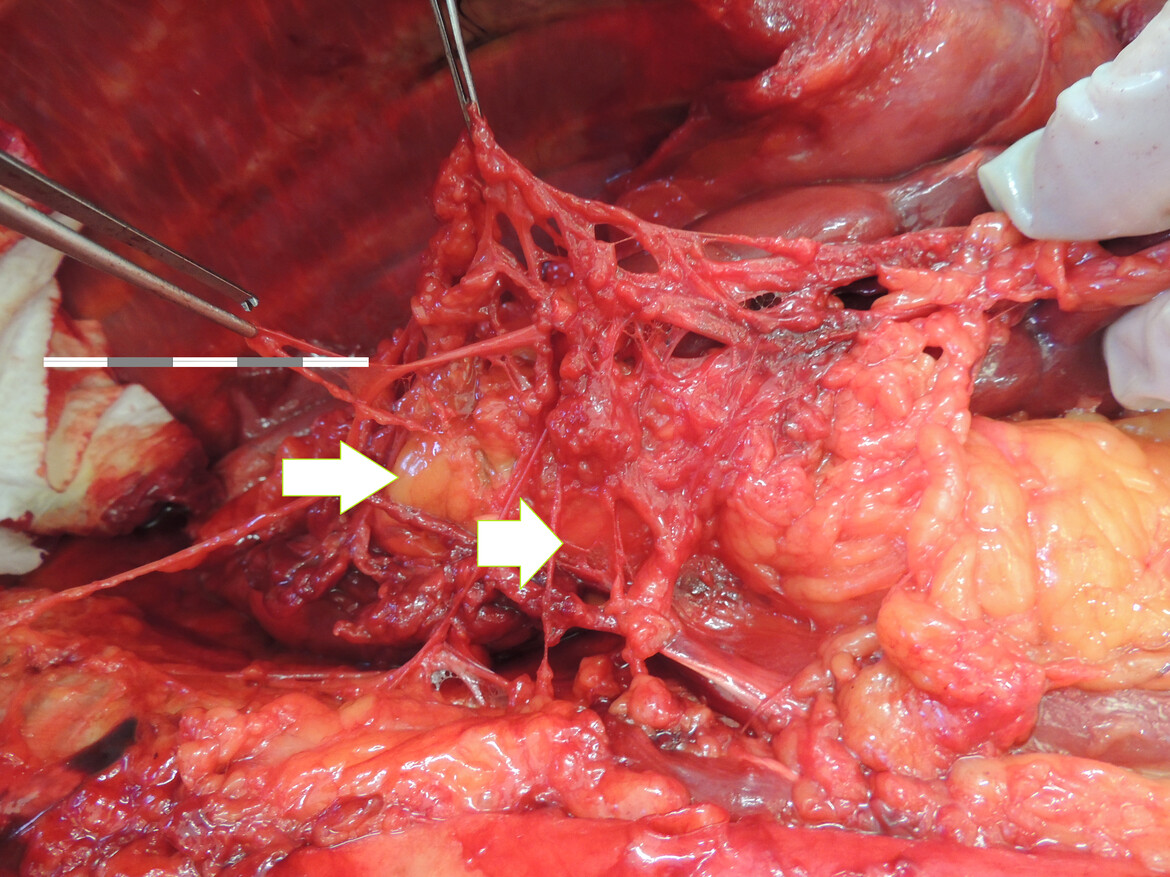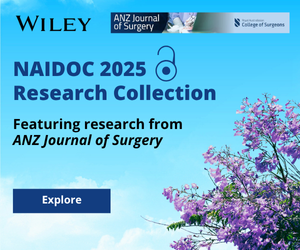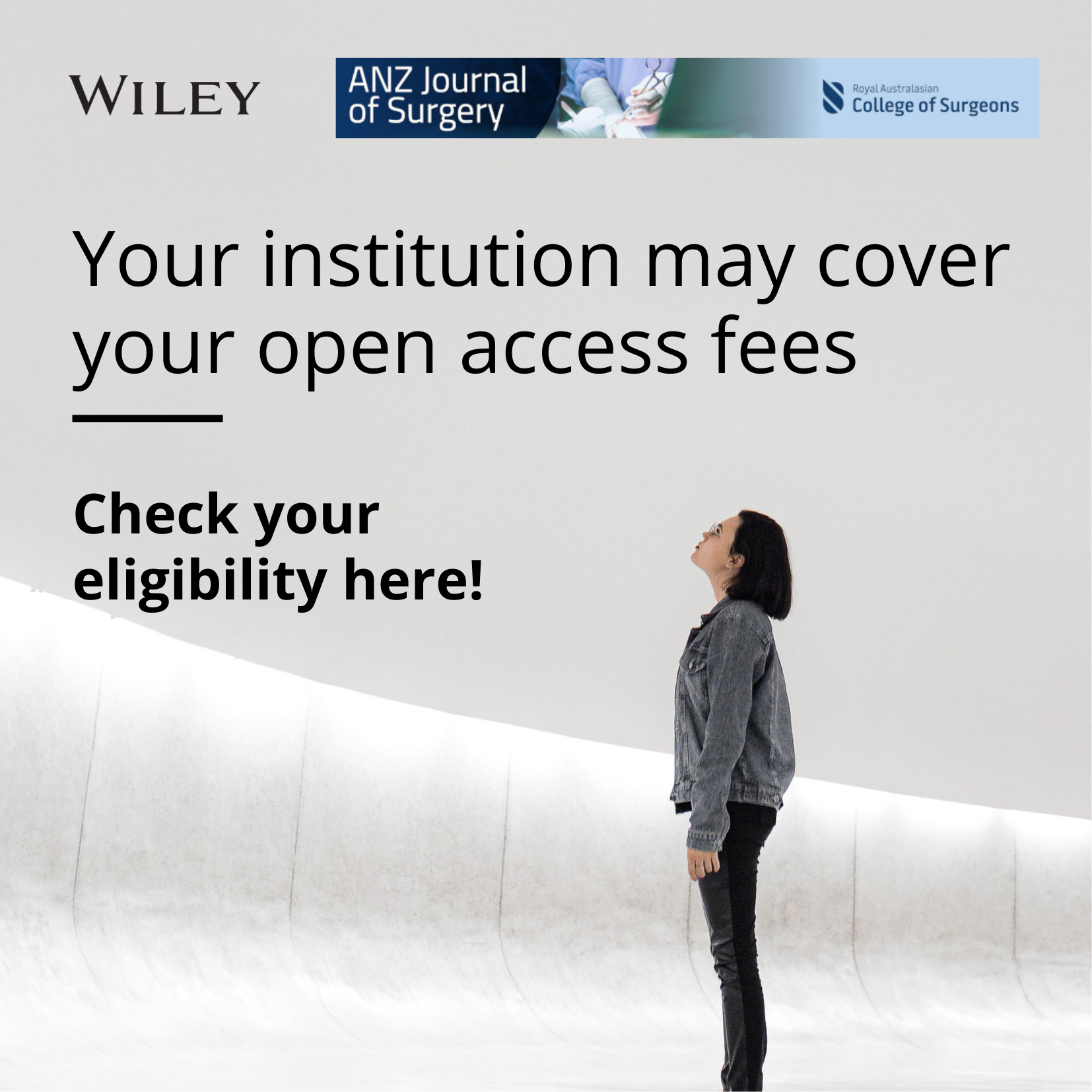Journal list menu
Export Citations
Download PDFs
ISSUE INFORMATION
EDITORIAL
Oncoplastic breast surgery: a pictorial classification system for surgeons and radiation oncologists (OPSURGE) – time for a new communication standard?
- Pages: 2094-2095
- First Published: 09 January 2025
PERSPECTIVE
Taming Surgical Inflammation: should steroids be an essential component of microcirculatory care to reduce postoperative complications?
- Pages: 2096-2098
- First Published: 28 October 2024
Rethinking adhesional small bowel obstruction management: the case for dexamethasone as a non-operative alternative
- Pages: 2099-2100
- First Published: 26 October 2024
Ileocolic resection for Crohn's disease and the Kono S anastomosis: all that is gold does not glitter
- Pages: 2101-2102
- First Published: 29 July 2024
REVIEW ARTICLE
Breast cancer related lymphoedema: a review of contemporary preventive strategies
- Pages: 2105-2110
- First Published: 16 November 2024
E kaua e hoki i te waewae tūtuki, ā, apā anō hei te ūpoko pakaru – a systematic review of neurosurgical disease and care for Māori in New Zealand
- Pages: 2111-2118
- First Published: 13 September 2024
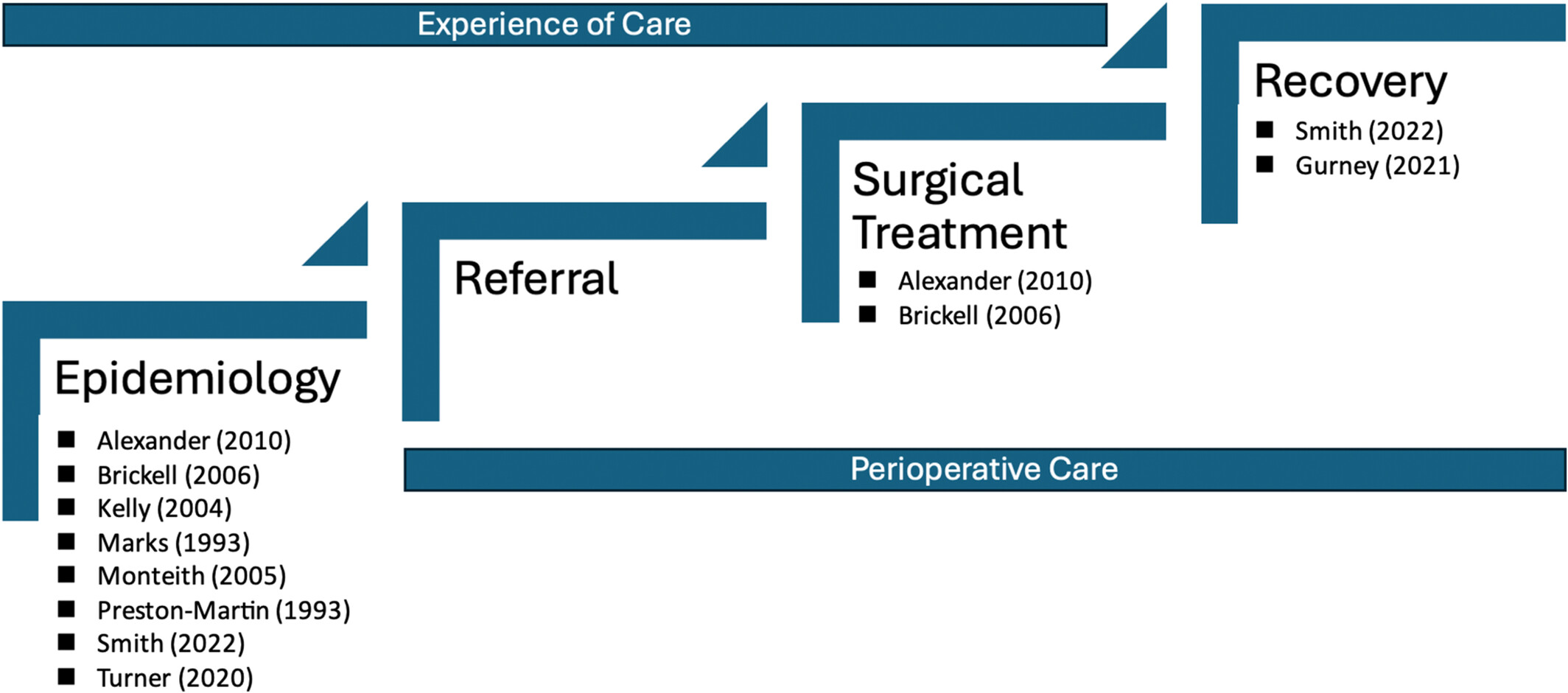
Studies assessing neurosurgical disease incidence and perioperative outcomes for Māori are lacking. Most studies are not responsive to Māori however, most of these studies are dated. Research outlining patient and whānau experiences of neurosurgical disease and care have not yet been conducted and should be considered for future research.
Day case laparoscopic cholecystectomy: a review of patient selection factors and identification of potential barriers to same-day discharge
- Pages: 2119-2127
- First Published: 09 October 2024
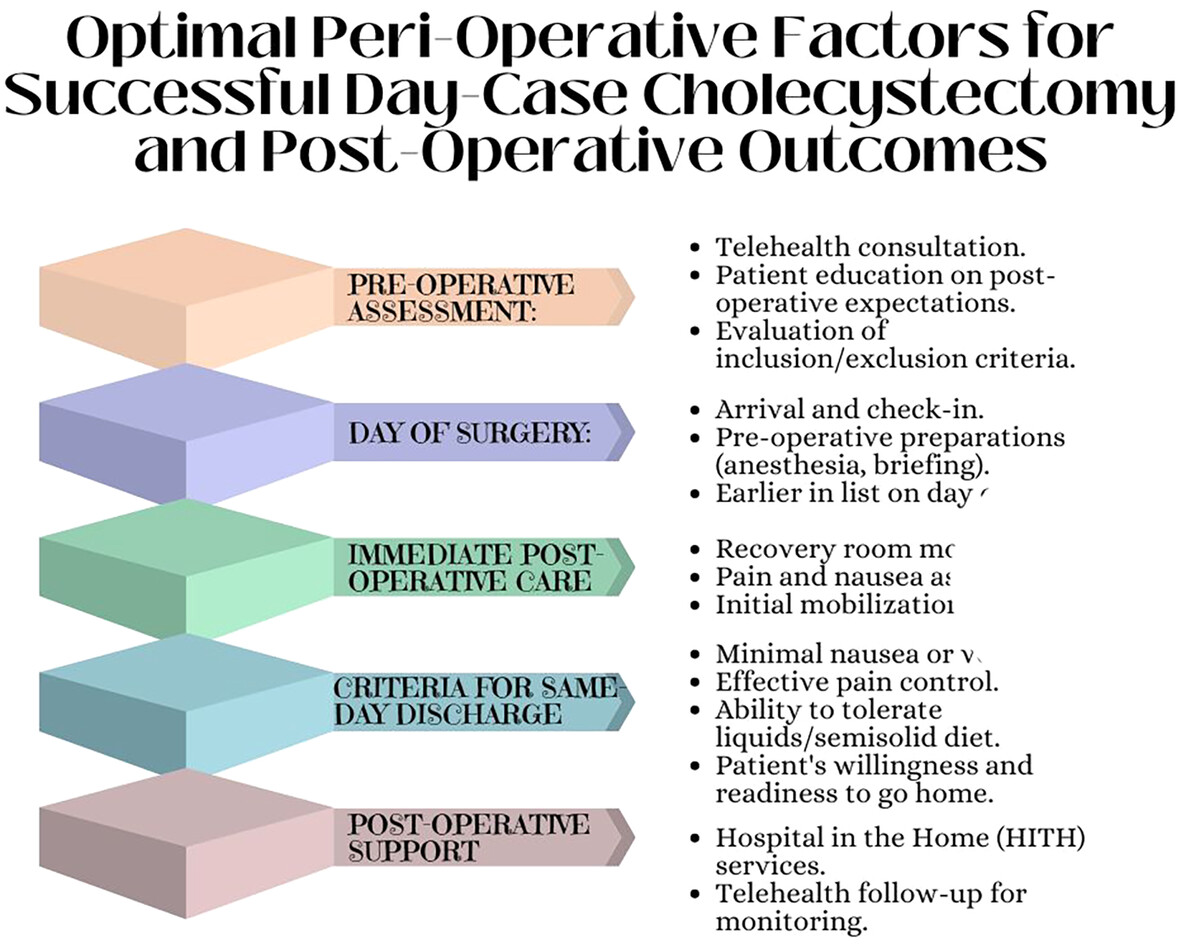
This review synthesizes international studies on day-case laparoscopic cholecystectomy (DCLC), highlighting patient selection criteria, procedural factors, and outcomes. Findings indicate that judicious selection of patients for DCLC can offer a safe alternative to overnight stays, with comparable surgical outcomes and high patient satisfaction. Strict adherence to selection criteria can optimize implementation, reducing unexpected admissions and readmissions, thus providing valuable guidance for establishing DCLC protocols in hospitals.
Fluorescence imaging in reducing anastomotic leak after left-sided colorectal resections: a systematic review and updated meta-analysis
- Pages: 2128-2136
- First Published: 16 August 2024
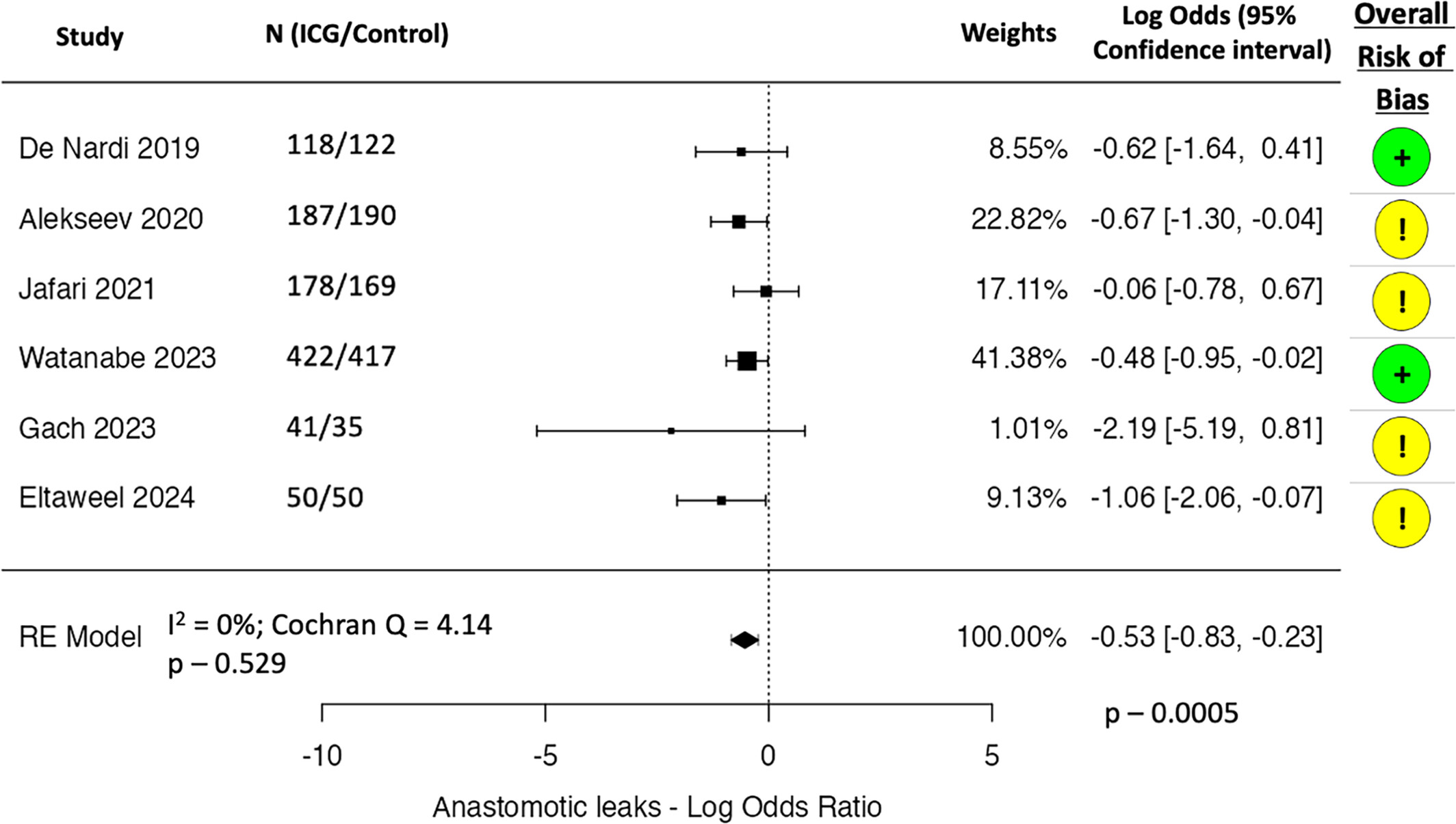
This systematic review and meta-analysis assesses indocyanine green fluorescence in left-sided colorectal anastomosis, finding a pooled odds ratio of 0.586 (95% CI: 0.434–0.792) from six randomized trials and 1949 patients, suggesting a 4.7% absolute reduction in leak rates with moderate certainty, indicating its potential as a standard of care.
PROFESSIONAL SKILLS FOR SURGEONS
Oocytes on-call – a surgical trainees guide to oocyte cryopreservation
- Pages: 2137-2139
- First Published: 26 October 2024
BREAST SURGERY
Oncoplastic breast surgery – a pictorial classification system for surgeons and radiation oncologists (OPSURGE)
- Pages: 2140-2149
- First Published: 10 September 2024
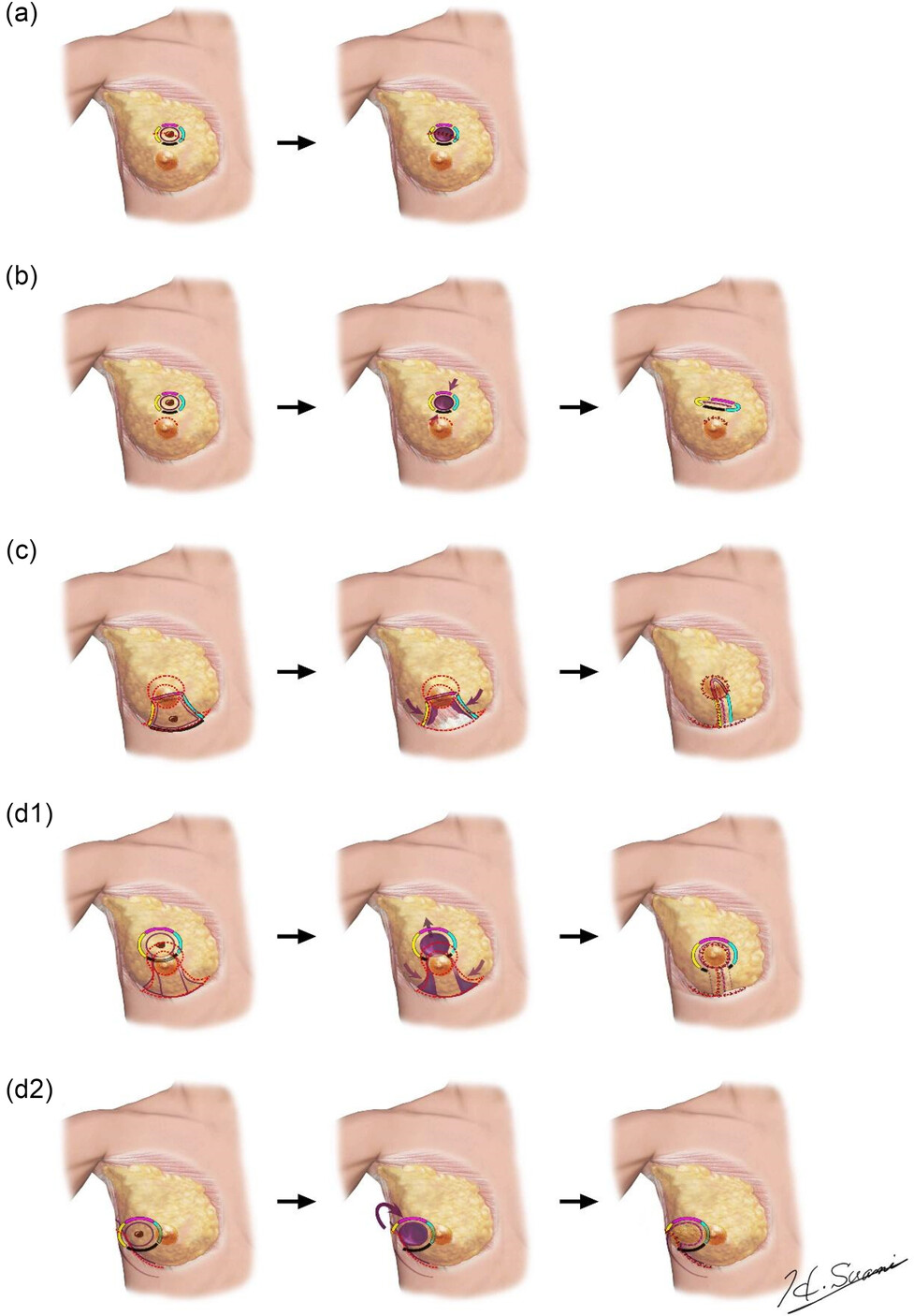
Changes to the tumour bed following oncoplastic surgery complicate the administration of adjuvant radiotherapy. A framework for tumour bed classification is proposed (OPSURGE) to aid communication between oncoplastic surgeons and radiation oncologists, particularly when using a boost dose to the primary tumour site.
Outcomes following extended resection of radiation-induced angiosarcoma of the breast: a sarcoma unit experience and systematic review
- Pages: 2150-2158
- First Published: 10 September 2024
Is routine axillary staging still required in clinically node negative early breast cancer in women over 74 years?
- Pages: 2159-2164
- First Published: 27 November 2024

Retrospective review of invasive breast cancer in women in Australia and New Zealand between 2010 and 2022 using BreastSurgANZ Quality Audit Database to investigate incidence and identify predictors of axillary nodal metastases in early hormone receptor positive breast cancer in women >74 years to inform decision making about sentinel lymph node biopsy in this population. Review of 127 436 cases where 17 599 were over 74 years, two thirds were node negative and in patients >74 years with grade 1–2, T1a-b, ER positive HER2 negative cancers without LVI 94% were node negative. Lymph node status influences adjuvant treatment in this population so we recommend clinicians consider tumour factors and patient fitness in decision making about SLN biopsy in the elderly population with hormone receptor positive early breast cancer.
OTOLARYNGOLOGY HEAD AND NECK SURGERY
Long-term outcomes in advanced anterior skull base malignancy: a single quaternary institution experience
- Pages: 2165-2172
- First Published: 01 July 2024
The disease burden of untreated chronic otitis media in Indigenous children from remote communities does not improve over time. A longitudinal study
- Pages: 2173-2178
- First Published: 07 October 2024
GENERAL SURGERY
Outcomes of a modified technique of partial parotidectomy and novel parotid tumour position classification from a single surgeon prospective database
- Pages: 2179-2184
- First Published: 09 October 2024

This series confirms the safety and adequacy of more conservative partial parotidectomy for benign tumours, highlighting most tumours are peripherally situated, but not more prone to positive histological margin involvement. Partial parotidectomy with routine intraoperative facial nerve monitoring, is achieved with low facial nerve palsy rates, and low local recurrence.
Postoperative 68Ga-DOTATATE positron emission tomography has a low yield in incidental appendiceal neuroendocrine tumours
- Pages: 2185-2188
- First Published: 23 August 2024
HEPATOPANCREATICOBILIARY SURGERY
Impact of clinical lymph node status on survival in patients with intrahepatic cholangiocarcinoma undergoing liver resection plus lymphadenectomy
- Pages: 2189-2194
- First Published: 31 May 2024
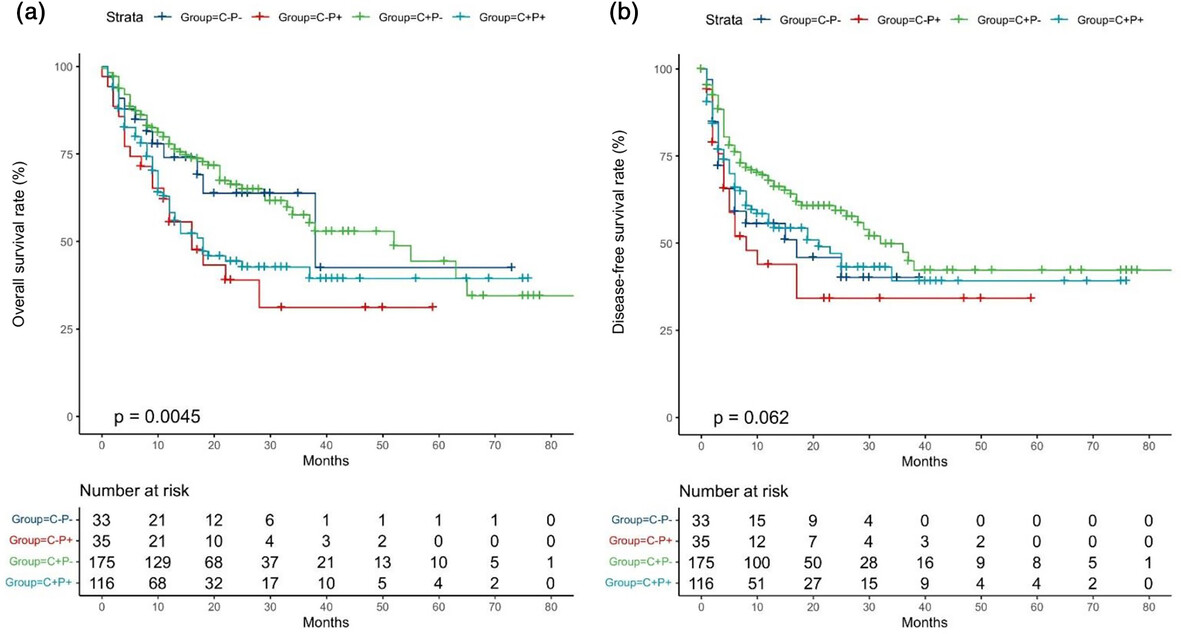
ICC patients who had clinically positive but pathologically negative lymph nodes recorded the highest median OS (52 months) and median DFS (32 months). Conversely, those who were clinically negative but pathologically positive experienced the lowest median OS (16 months) and median DFS (8 months). A comprehensive lymphadenectomy may enhance survival outcomes for ICC patients with clinically positive lymph nodes.
Measurement of the distal bile duct density on computed tomography can differentiate choledocholithiasis from a control population
- Pages: 2195-2200
- First Published: 05 August 2024
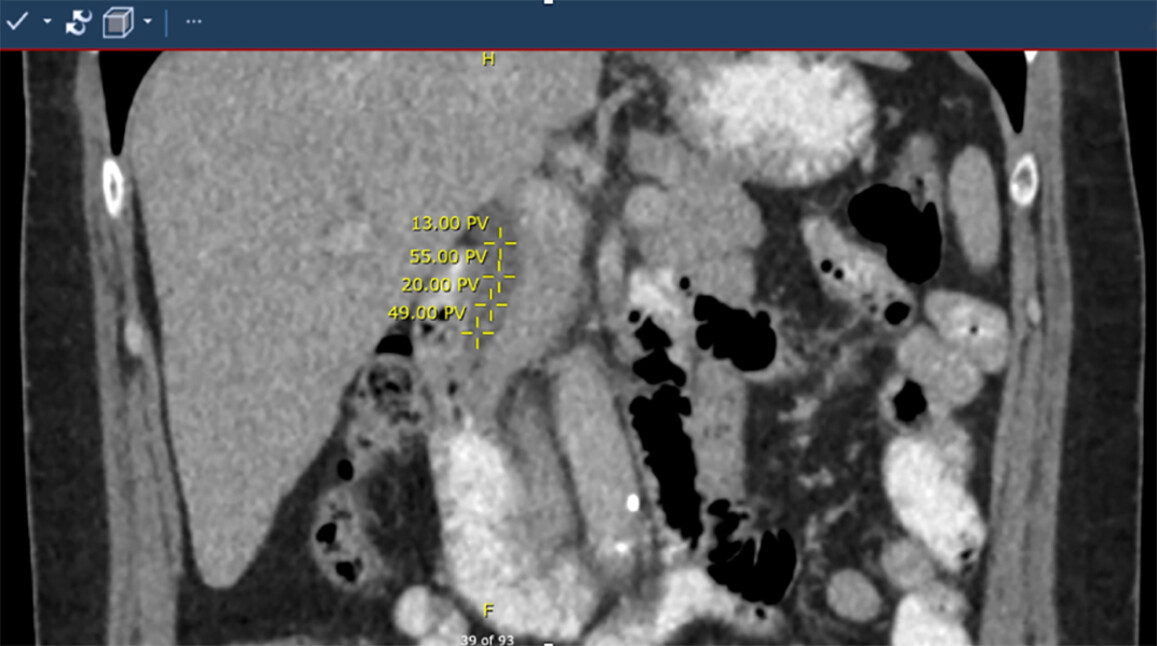
Computed tomography is used to differentiate pyonephrosis from hydronephrosis where the presence of infection increases fluid density. We hypothesized that stones, sludge and infection would all increase the fluid density of the distal bile duct in the setting of choledocholithiasis. The distal bile duct fluid density is significantly higher in patients who have proven choledocholithiasis at ERCP compared to a normal population. Calculation of the distal bile duct fluid density could improve early detection of choledocholithiasis using CT and reduce reliance on MRCP or EUS prior to ERCP.
An anatomical analysis of liver volume and quality by ethnicity in a New Zealand population
- Pages: 2201-2205
- First Published: 07 October 2024
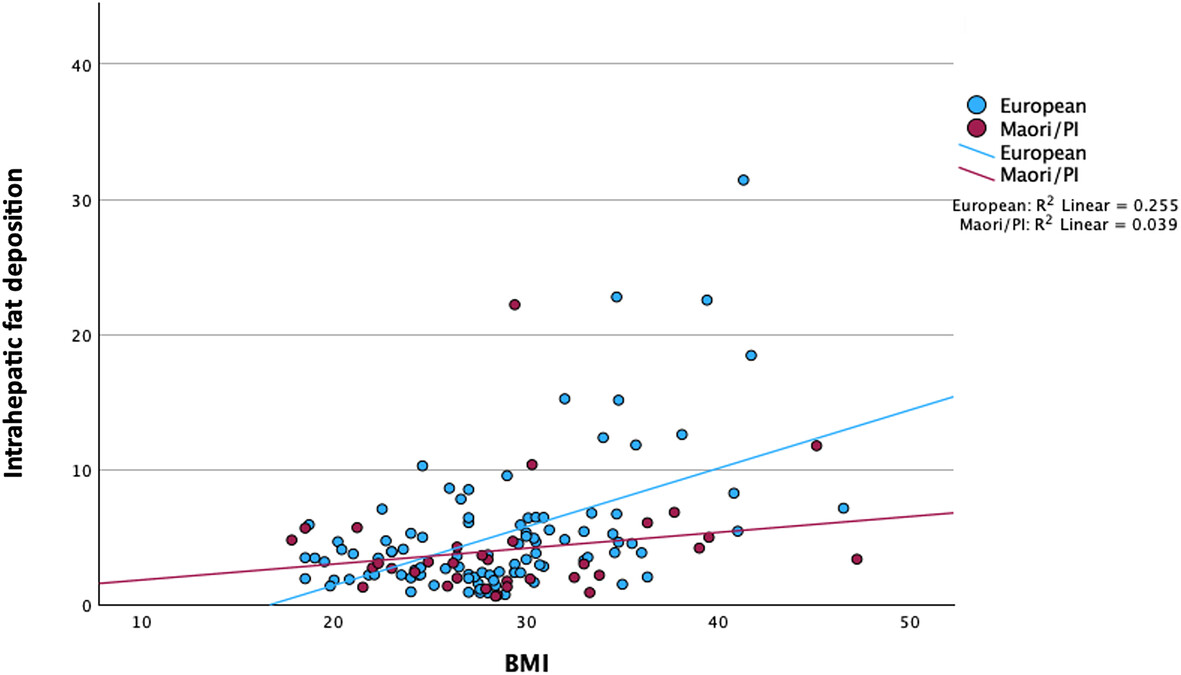
Post-hepatectomy liver failure is associated with inadequate future liver remnant, which is influenced by liver quality. No significant variances in liver volumetry were found across different ethnic groups in New Zealand. However, the strength of correlation between Body Mass Index and Intra-hepatic fat deposits varied amongst the ethnic cohorts. Consequently, knowledge of liver volumetry is not enough and liver quality and patient ethnicity should be taken into consideration when planning management for hepatic neoplasms.
A review of emergency laparoscopic cholecystectomies in Far North Queensland
- Pages: 2206-2212
- First Published: 16 October 2024
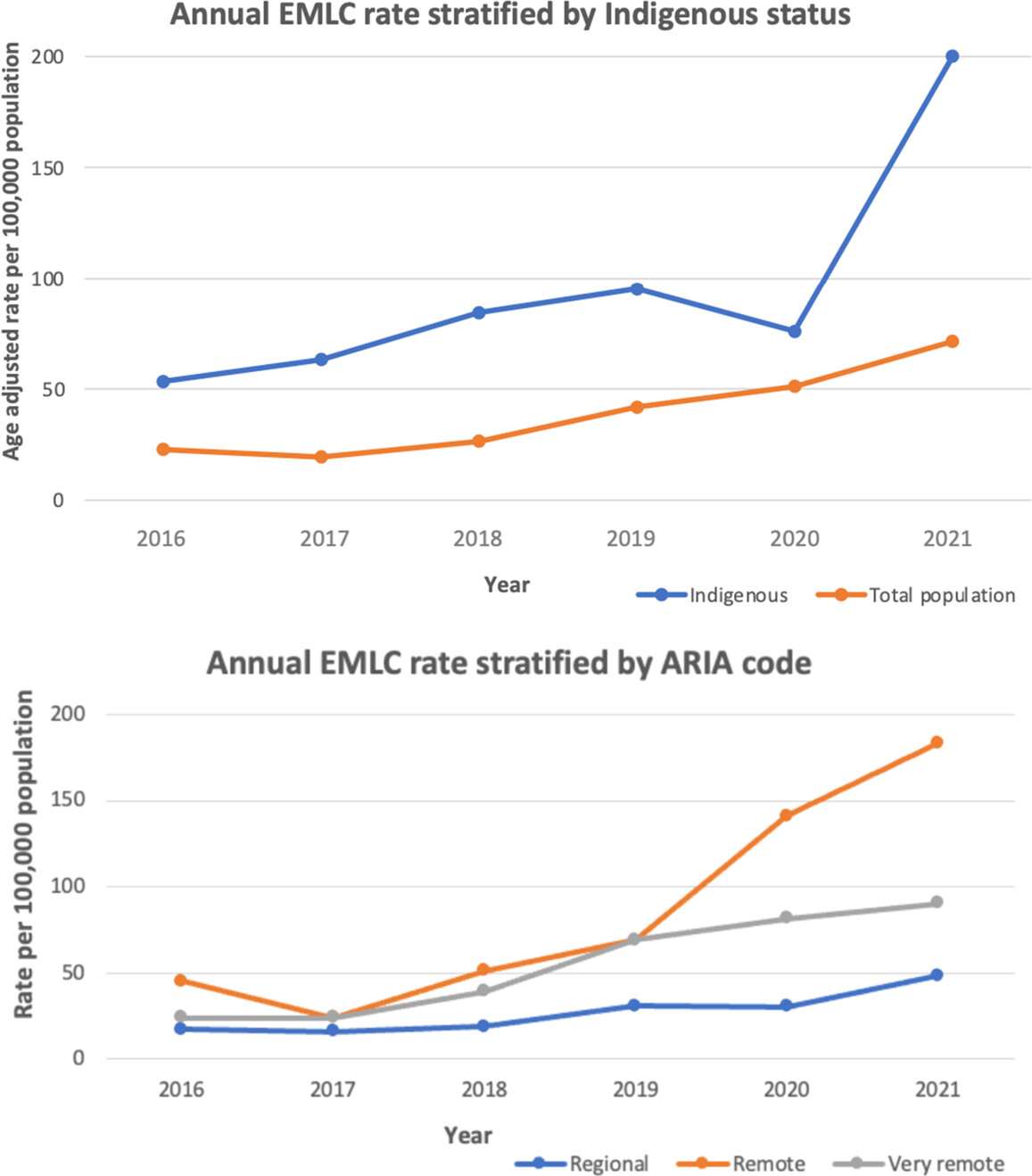
This retrospective study of emergency laparoscopic cholecystectomies was conducted at Cairns Hospital between 2016 and 2021. Results demonstrate increasing rates of emergency laparoscopic cholecystectomy across the study timeframe and that rates were significantly higher in Indigenous and remote patients.
ORTHOPAEDIC SURGERY
Intra-operative neuromonitoring in paediatric spinal deformity surgery: a retrospective single-centre experience
- Pages: 2213-2218
- First Published: 23 October 2024
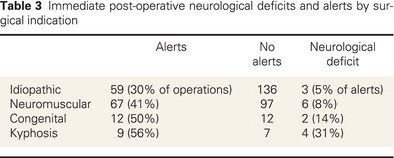
Intra-operative neuromonitoring during corrective surgery for scoliosis and kyphosis provides an opportunity to prevent iatrogenic injury by detecting changes in motor or sensory function early. Our results highlight that effectiveness in detecting post-operative deficits and provide further confidence in the use of neuromonitoring. However, there are still a high number of false positive alerts which surgeons should be aware of when making decisions.
Effect of insurance type on Management of Vancouver B Periprosthetic Fractures: length of stay, discharge destination and cost implications
- Pages: 2219-2224
- First Published: 29 October 2024
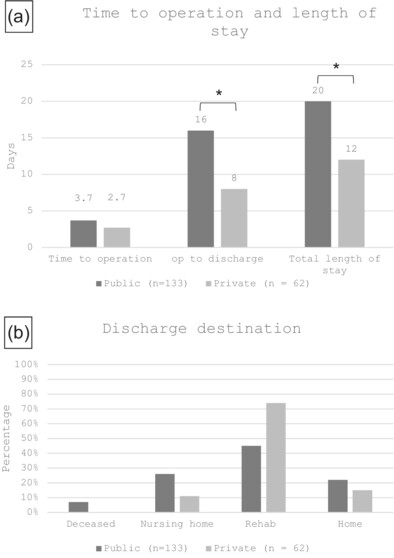
Private insurance status in patients with proximal periprosthetic femoral fractures was associated with an average 8-day reduction in hospital stay and increased likelihood of discharge to private rehabilitation. Prolonged hospital stays for public patients stem from delays in accessing rehabilitation beds.
Does admission to intensive care post total joint arthroplasty result in poorer outcomes 12-months after surgery?
- Pages: 2225-2230
- First Published: 27 November 2024
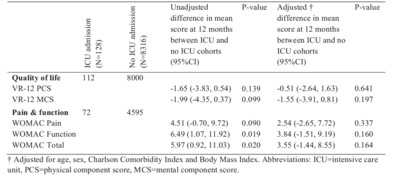
This retrospective analysis of 8444 primary elective total hip or knee arthroplasties aimed to identify whether admission to intensive care (ICU) post-total joint arthroplasty was associated with poorer quality of life, pain and functional outcomes for patients 12 months postoperatively, compared to candidates not requiring ICU admission. We found that patients reported similar clinically meaningful improvements in quality of life, pain and function 12 months after surgery, regardless of whether they were admitted to ICU postoperatively.
RURAL, REGIONAL AND REMOTE SURGERY
Rural general surgical provision from the perspective of twenty-two rural general surgeons: a thematic analysis
- Pages: 2231-2237
- First Published: 12 September 2024
Impact of routine pre-operative risk assessment on patients undergoing emergency major abdominal surgery in a regional Victorian hospital
- Pages: 2238-2244
- First Published: 28 October 2024
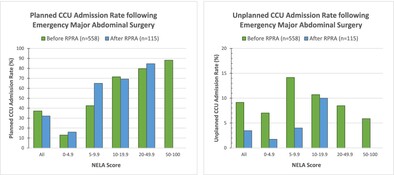
This project aims to identify whether the introduction of routine preoperative risk assessment (RPRA) with the ‘National Emergency Laparotomy Audit (NELA) Calculator’ as standard-of-care for emergency major abdominal surgery at a regional Victorian hospital has improved postoperative outcomes and critical care unit (CCU) utilization. An audit was performed including all adult general surgery patients who required EMAS at Bendigo Health between September 2017 and August 2022, comparing outcomes before and after introduction of RPRA. RPRA reduced rate of unplanned CCU admissions but did not impact postoperative mortality or complication rates.
Twelve-year review of horse-related trauma registry presentations to a regional Australian Emergency Department
- Pages: 2245-2250
- First Published: 16 November 2024
SURGICAL ANATOMY
Assessing anatomical variations of the superior mesenteric artery via three-dimensional CT angiography and laparoscopic right hemicolectomy: a retrospective observational study
- Pages: 2251-2257
- First Published: 07 October 2024
Contribution to the variability in the coeliac plexus structure and formation
- Pages: 2258-2262
- First Published: 21 September 2024
IMAGES FOR SURGEONS
The cyst of the canal of nuck: a great mimicker of groin hernia in female
- Pages: 2263-2264
- First Published: 07 October 2024
Cholecystectomy and common bile duct exploration via a ventral hernia sac. A novel solution for a co-morbid patient
- Pages: 2265-2266
- First Published: 11 November 2024
A strangulated Meckel's diverticulum in a femoral hernia: a Littre's hernia
- Pages: 2267-2268
- First Published: 07 October 2024
Complete sigmoidorectal intussusception secondary to colonic lipoma
- Pages: 2269-2270
- First Published: 17 October 2024
Gastrointestinal bleeding in Crohn's disease due to Epstein–Barr virus-positive mucocutaneous ulcer
- Pages: 2271-2272
- First Published: 25 October 2024
MEDIA REVIEW
Colorectal surgery: an Australian historical perspective by Dr. Mark Killingback
- Page: 2273
- First Published: 09 January 2025
LETTER TO THE EDITOR
Clubbing of ipsilateral fingers following ganglion cyst surgery: a case report
- Page: 2274
- First Published: 16 December 2024




